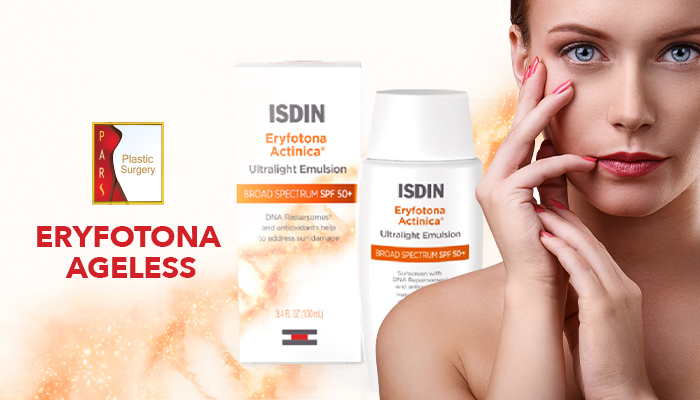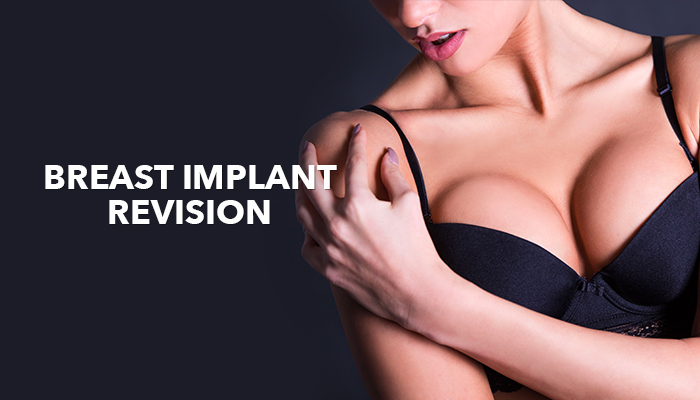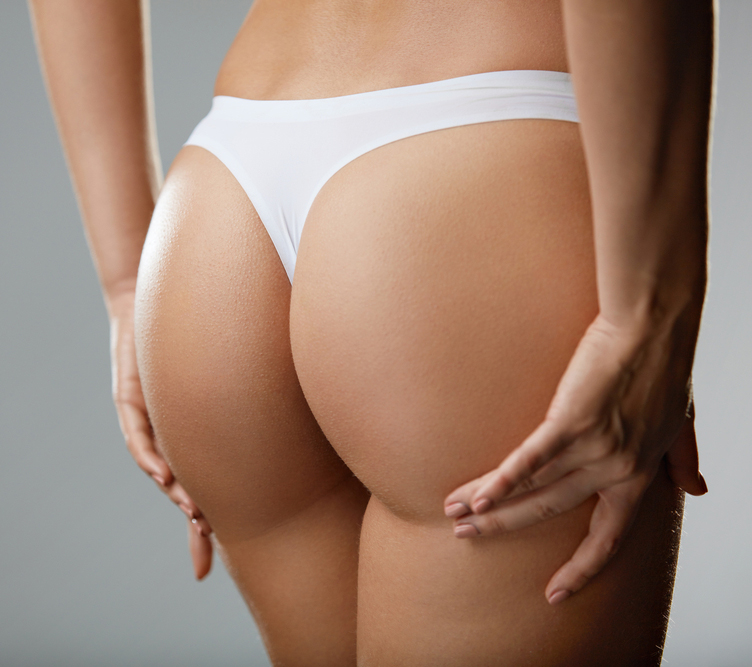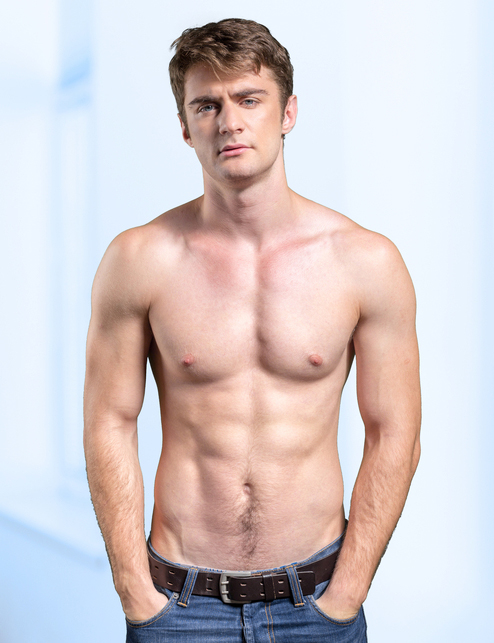
Botulinum toxin—or Botox®—is a relatively new procedure in the aesthetic field used to reduce or remove the visual signs of aging, like hyper-functional lines (which are commonly called wrinkles). These hyper-functional lines often cause the patient to wrongly look angry, anxious, fearful, or fatigued. Previously, plastic surgeons only had surgical options that provided minimal improvements, not to mention exposing the patient to the risks associated with surgery.
How does it work?
Hyper-functional lines result from the contraction of the underlying facial musculature. Clostridium botulinum bacterium has the capacity to produce 7 types of toxins, lettered from A through G, and toxin A is the most familiar to clinicians. Botox® is a neurotoxin produced by bacteria, which is processed to be used in the form of a purified protein. Its mechanism of action is really quite simple: botulinum toxin blocks the transmitters between the nerve and the muscle, weakening the muscle and preventing it from contracting temporarily, but without affecting the sensory feeling in the muscles.
This toxin requires between 24 and 72 hours to act. In many cases, the patient may require up to 7 days to notice the complete effect. On the other hand, the effects of botulinum toxin last 8-12 weeks. Typically, during week 10, patients begin to notice a gradual disappearance of the injection’s effect.
What areas can be treated with Botox?
The most common areas treated with botulinum toxin are the forehead (when there are furrows), the glabella (the region between the eyes), around the corners of the eyes (wrinkles called crow’s feet), around the lips, and wrinkles in the neck.
In which cases can a patient use Botox?
In theory, all facial movements may produce wrinkles. However, ideal patients are those with thin skin and wrinkles that appear with muscle contraction. The patient may perform an easy test: if the wrinkle or line disappears with the pressure of the fingers, they are a good candidate (glabellar spread test).
Likewise, a patient is a good candidate for the procedure if they feel that they appear tired or even angry when they are not, are physically healthy and have realistic expectations, and know that they will look younger but with limitations (which means that the patient should understand that Botox relaxes the wrinkles but does not erase them completely).
Botulinum toxin type A is the safest remedy to remove wrinkles, and it can be combined with other cosmetic anti-aging procedures, including chemical peels, dermal fillers, and others to obtain better results. When these procedures are combined, they can help to prevent the formation of new lines.
The benefits of Botox are unlimited. Each year the use and scope of this injection increases with technology. Generally, patients have shown a high degree of satisfaction with the procedure when performed by an expert.
What are the other uses of Botox?
Besides cosmetic uses, Botox also has important medical uses. Through the years, it has been used for medical purposes. It was initially used to treat strabismus (also called lazy eye), blepharospasm, and cervical dystonia. In 2002, it was approved for aesthetic use, and in 2004 it was approved for another medical condition, hyperhidrosis (commonly called excess sweating). In 2010, Botox was approved to be used as treatment of migraines.
It has also been prescribed to alleviate hemi-facial spasm, spasmodic dysphonia, achalasia, sialorrhea, and urinary incontinence.
In which cases is the use of Botox contraindicated?
Botox shouldn’t be used in patients who have experienced prior cases of allergic reaction to botulinum toxin or albumin, nor should it be used in the case of pregnancy and breastfeeding (since the effects on the baby are unknown), for patients younger than 12 years, or injection into areas with infection, inflammation, or previous surgery. There are relative contraindications like patients with thick skin or deep dermal scarring, preexisting motor neuron disease (e.g., myasthenia gravis, neuropathies, etc.) because underlying weakness can be exacerbated, and local weakness can occur more than expected at injection sites in these patients. Likewise, the coincident administration of aminoglycosides, penicillamine, and quinine, among other drugs, may potentiate the paralysis because they naturally decrease neuromuscular transmission.
How should a patient prepare for a Botox injection?
It is important for the patient to discuss their goals with the doctor, remembering that Botox can improve the appearance, but only in indicated doses. When excessively applied, it can produce health problems and paralysis instead of providing a benefit.
The patient should avoid medication like aspirin or ibuprofen several days before the injection, as these drugs can produce a bruise at the site of the needle injection (this is because these medications alter the blood and increase chances of bleeding). The doctor also needs to know if the patient takes muscle relaxants or sleeping aids, or presents allergies to any medication.
Likewise, the patient should inform the doctor if they have received any type of botulinum toxin injections within the past four months or have had prior facial surgical procedures. Physical examination concentrates on the identification of prior facial surgical sites, the examination of skin qualities (such as elasticity) and the areas that need to be treated, locating hyper-functional lines, and determining the capability to smooth them with the spread test.
A glabellar “spread test” is commonly used before the injection. During this test, the patient or plastic surgeon tries to eliminate the glabellar wrinkles just making pressure with the thumb and index fingers. With this test, they may estimate the benefits that Botox can provide in each particular case.
How much do Botox injections cost?
The American Society of Plastic Surgeons says that in 2014, the average cost of botulinum toxin injections was $371. However, the cost can widely vary, depending on extra fees and the amount of Botox that will be injected. Surgeons’ fees always vary according to their experience and qualifications.
What is the procedure of the Botox injection?
Using injections of botulinum toxin is considered by many people to be an easy procedure, but it should only be performed by an experienced healthcare professional. There are more than 40 muscles just in the face, each one with a particular movement, so the person who performs botulinum toxin injections should understand and select correct injection spots to optimize the treatment.
All areas that will be injected should be carefully cleansed with a non-alcohol solution (such as Hibiclens or Betadine). Although most people tolerate injection discomfort well, in some cases, the doctor can first inject a numbing medication into the skin; likewise, a prescription cream can be applied 60 to 90 minutes before the procedure and, in some cases, a blast of very cold air is directed at the treated area for about 10 seconds.
Botulinum toxin A (Botox®) must always be stored at a maximum temperature of -4°C. The toxin generally is mixed with 2.5 mL of 0.9% non-preserved sterile saline solution. A special needle should be used to inject small amounts of botulinum toxin into specific muscles. At this point, the surgeon should be careful to inject only the muscles which are producing wrinkles to preserve the natural facial expressions of the patients.
Treatment with botulinum toxin injections in most patients takes 15 minutes, but procedure time can vary. The amount of injections that each patient needs will depend on their facial features and the extent of their wrinkles.
For example, if the patient desires just to treat the crow’s feet, 2 or 3 injections are usually enough, but the furrows above the brow could need five or more. Patients with big muscles also require higher doses of Botox®. Additionally, in some cases, it may be necessary to apply 2 or 3 sessions of Botox in order to to erase deeper wrinkles before obtaining the desired results. Injections of the upper face and periocular region are usually performed with the patient’s face in a vertical position (seated).
– Horizontal forehead lines: These lines are relatively easy to treat, and in most cases, the result is satisfactory. The function of the frontalis muscle is to elevate the eyebrows and move the skin of the forehead. A total paralysis of this muscle should be avoided; if it occurs, the patient will have a brow ptosis and experience loss of forehead expression. In the same way, when the injection is performed near the lateral eyebrow, it may cause lateral eyebrow ptosis.
In the case of these lines, more injections should be used with small amounts of Botox®. Generally, the plastic surgeon uses between 3 and 5 injections on each side of the midline, and the injection sites should be separated between 1 and 2 cm. The first injection is usually performed 1 cm over the eyebrow, and the other injections are performed to form a “V” shape in the eyebrow.
– Crow’s feet (medically termed “lateral canthal lines”): In this case, the plastic surgeon should inject the lateral fibers of the orbicularis oculi muscle, which are distributed in circles. In the case of crow’s feet, the plastic surgeon applies approximately 3 or 4 injections in the border of the orbit. Injections sites may be separated for at least 0.5 to 1 cm.
The complication, in this case, occurs when injections are performed in a wrong place, as then the patient may suffer eyelid ptosis or diplopia.
– Glabellar region: This region is mainly moved by the corrugator supercilii muscle. Each muscle receives an injection. A part of the injection is performed near the muscle’s origin, and the other part is injected in the muscle belly.
– Nasolabial: This area is difficult for the plastic surgeon to treat, and therefore, offers mixed results. A lot of doctors do not use botulinum toxin in this area due to a high risk of upper lip paresis.
– Platysma (neck): Platysmal bands can be treated with the direct injection of botulinum toxin into the band of the muscle affected. When the band is identified, the botulinum toxin should be injected with between 1 and 3 cm of separation along the platysma.
What is the post-injection care?
During the procedure, the patient doesn’t need to be under anesthesia, and there is no recovery time for botulinum toxin injections. The patient may resume their normal activities immediately. However, the patient is asked to remain upright for 2 to 3 hours and not to massage the injected areas after the procedure to prevent spreading the toxin to other areas of the face. If this happens, the patient could have temporary facial weakness or drooping.
Which are the side effects and complications of a Botox injection?
This procedure is usually safe when performed by a plastic surgeon. However, among the side effects and complications of botulinum toxin can be included bruising, infection, redness and pain at the treated area, symptoms of flu, headache, and even temporary facial drooping.
Another complication, which occurs especially when the patient isn’t careful during post-injection recovery, is that the toxin spreads beyond the treatment area, causing changes in the shape of the face; likewise, it can cause muscular weakness in other non-injected parts of the body. In these cases, the disease known as botulism appears (disease caused by the unprocessed toxin). Symptoms of this disease may include breathing and swallowing problems, and even muscular weakness in other muscles of the body that were not injected. In serious cases, the patient may present slurred speech, incontinence, and vision problems. In those cases, the patient should seek medical assistance immediately.
Are Botox injection results permanent?
The effect of botulinum toxin injections starts a few days after the procedure, and, according to the treated area and the number of injections, effects may last between 3 and 12 months. To maintain the effect, the patient may need regular follow-up injections. Some patients will require additional procedures to obtain their desired results; likewise, they may use other fillers to completely plump the wrinkles, which are easier to treat now that they are relaxed.
Dr. Amjadi MD, DDS, FACS
Certified by the American Board of Plastic Surgeons
915 Gessner Rd #870
Houston, TX 77024
713-465-6198













